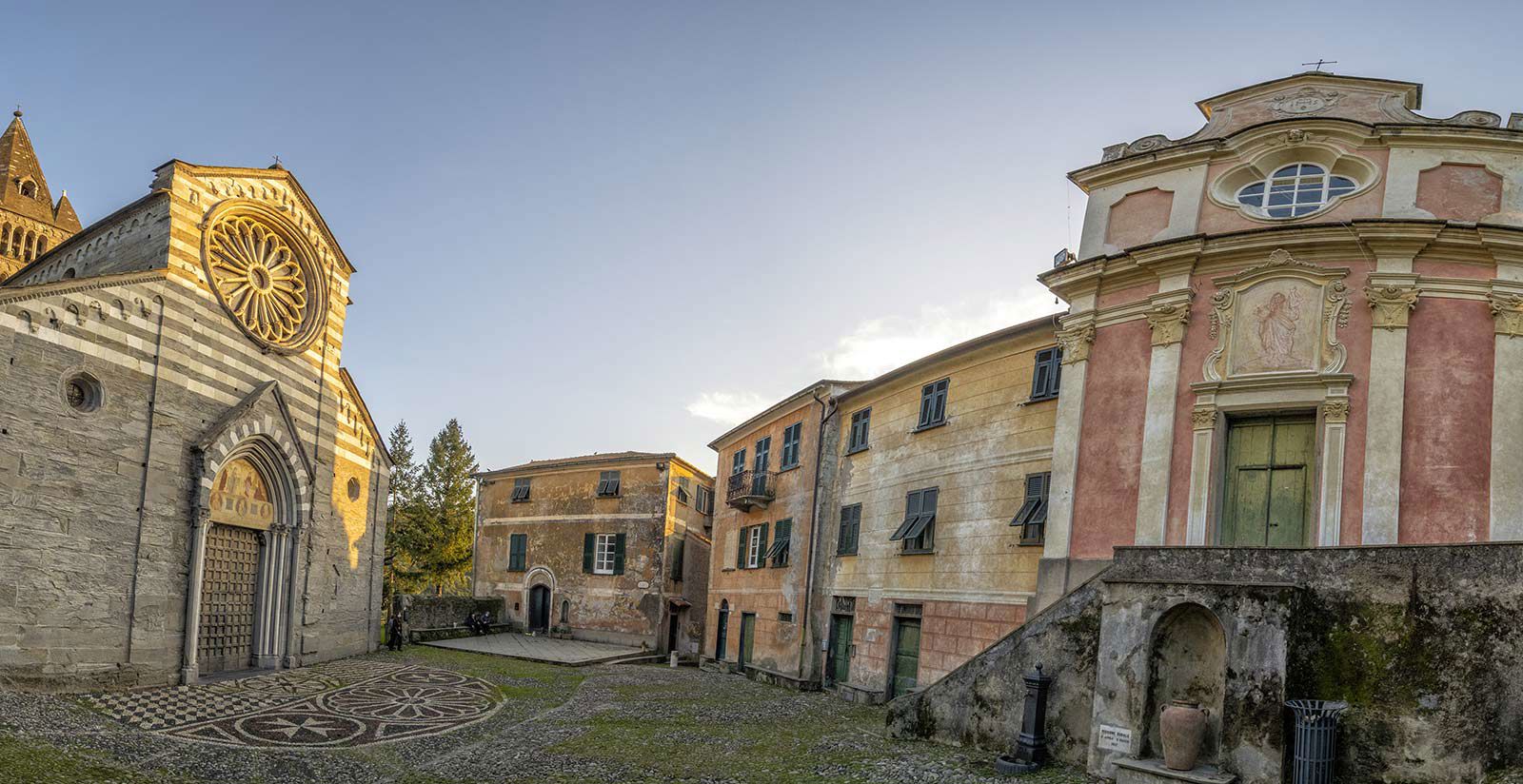Lavagna
At the center of the Riviera di Levante is Lavagna. Yesterday an ancient city of noble history, today a pleasant town for the quality of life both for those who decide to live there and for those who choose it as a holiday destination.
The name of this city is also known to all those who have never been there, who have never seen its sea or have never walked along the colorful streets with beautiful facades. In fact, this city is called just like that big slab of slate, which was “extracted” from its hills, the lavagna (italian for "blackboard").
A thousand years old city, Lavagna is equally rich in artistic and architectural testimonies. Starting from the sea, we enter the village to see:
1 – The Torre del Borgo. Set between Via XX Settembre and Via Cavour, it was built in the 1500s, probably as a lookout tower, and has undergone various uses over time. Now recovered and used as a museum and cultural events venue.
2 – Porta di Ponente. Near the sanctuary of Nostra Signora del Carmine, it is the only surviving and ancient gateway between the medieval town of Lavagna and the town of Madonna del Ponente.
3 – Basilica of Santo Stefano and monumental cemetery. From the 10th century and a collegiate church from 1610, today’s church was rebuilt around 1653. The two side bell towers of the facade were completed in 1657. Inside works of art by Domenico Piola and other Genoese painters. It overlooks Piazza Marconi and the Brignardello arcade with great scenic effect. Behind the church is the monumental cemetery, which for its sculptures is considered one of the most valuable and important of the territory.
4 – Palazzo Ravenna. Ancient convent of the Carmelite Friars, modified over the centuries, it first became the seat of the municipality, then of the school board. Today it is home to cultural activities: library, archive and space for thematic exhibitions.
5 – Oratory of the Holy Trinity. Located near the historic center dates back to the fifteenth century, and was for centuries the seat of the Holy Trinity brotherhood. Inside there are numerous processional christs, including one by the sculptor Anton Maria Maragliano, paintings by Luca Cambiaso and a valuable 18th century organ.
6 – Casa Carbone Museum. The house-museum is located in a three-story bourgeois building decorated in a Genoese style. Dating back to the mid-19th century and owned by Emanuele and Siria Carbone, it is furnished with furniture, paintings and objects from the 17th-20th century. The property is managed by the FAI.
7 – Sanctuary of Our Lady of Carmine. The current building was built between 1617 and 1631 by the Discalced Carmelites. Reopened for religious worship in 1806, it underwent major restoration and renovation works in 1835. The annexed convent, now owned by the municipality, is the seat of the “Giovanni Serbandini Bini” civic library.
Also worth a mention, despite being a couple kilometers inland, is The Basilica dei Fieschi (San Salvatore di Cogorno):
The basilica was built in 1244 by Pope Innocent IV, Sinibaldo Fieschi, a descendant of the noble branch of the Fieschi family, who dominated the entire Fontanabuona valley and much of the Val d’Aveto during this historical period. The decision to found a new place of worship was taken, according to local historical sources, while the Pope was in Genoa headed to the Council of Lyons in early 1245. Just while the pontiff was presiding over that council , the Fiesciano village and the entire county were severely attacked by Emperor Frederick II of Swabia, destroying much of the territory.
The Pope would excommunicate, shortly afterwards, directly from the Lyon council, the emperor. The rebuilding works were resumed only in 1252, the year in which the entire piazza area was again designed, erecting a new Count’s palace near the basilica – later called Palazzo dei Fieschi – with an adjoining oratory.
The building work lasted for a few years, so much so that the building was opened and consecrated to religious worship by the pontiff Adriano V, Ottobuono Fieschi, nephew of the uncle-pope Sinibaldo Fieschi and rose to the papal throne in 1276. it underwent restoration in the nineteenth century ,designed by Maurizio Dufour and more recently in the 1990's.
The religious pole was very important for the development of the territory, also because the temple was a destination for pilgrims on their way to Rome on the famous Via Francigena. The importance and beauty of the basilica – together with the adjacent village – granted its status as a national monument since 1860, and is still considered one of the most valuable and best preserved Romanesque buildings of worship in Liguria.
On 27 April 2005, on the occasion of 750th anniversary of the death of Pope Innocent IV, the “Cultural Center of the Fieschi Museum” was inaugurated in the halls of the ancient Count’s palace, fully dedicated to the history of the noble.



